Big Sandy Ranch gate — © Brian Rose
We arrived just before dark to the Big Sandy Ranch in the desolate Mars-like landscape of Wyoming on the western slope of the Wind River Range. Fires burning far to the west produced a haze that reddened as the sun went down. The ranch is located at the confluence of three creeks coming out of the mountains making it a favorable spot for grazing cattle or sheep, although at almost 8,000 feet, snowed-in for much of the year.
Big Sandy Ranch — © Brian Rose
The history of the ranch is microcosm of American western history. First occupied by the Shoshone Indians, then explored by the mountain men and beaver trappers, then a way station on the Oregon Trail, it saw thousands of wagon trains heading for California and Oregon. The original trail ran a short distance away over the South Pass, a gradual incline over the Continental Divide, and the spur of the trail running through the ranch, called the Lander Cutoff, was created as a more expeditious route to the west.
Big Sandy Ranch — © Brian Rose
Very little has changed on the ranch since the days of the Oregon Trail. Some of the structures are original, others have been modified or added to. A Native-American made teepee stands next to the so-called “Lincoln Cabin.” Sam Leckie was the first owner, and operated the Sheepherder’s Delight, a saloon that was the scene of numerous murders, most notoriously his own, leaving the place to his pregnant wife and several children.
Orrin Moore, in the employ of Posten brothers, had trouble with Mr. Leckie in the store and was ordered out and fired at several times. He proceeded to his wagon, secured his Winchester, and returning fired at Leckie who was standing in the door, hitting him between the eyes, and literally tearing off the top of his head.
The motto on a sign at the saloon read:
LIVE WHILE YOU LIVE, FOR YOU’LL BE A LONG TIME DEAD
For decades the property was operated as a dude ranch with guests staying in the various cabins. Eventually, the Flanigan family bought the ranch, named it the Big Sandy, for the largest of the nearby creeks, and continue to maintain the historic nature of the structures and landscape. A full accounting of the history of the ranch can be found here
They were in the Rocky Mountains, by God, with no lawmen to tell them what to do, no tax men to charge them for doing it, & no preachers or high-falutin’ women to tell them that a man’s pleasure wasn’t right.
Big Sandy Ranch teepee — © Brian Rose
It was the homeland of the Shoshone Indians and provided summer camps for the Bannock, Crow, Gros Ventre and Blackfoot. Sheepeaters lived high in the mountains. Indians ranged over every part of what is now Sublette County from the edge of the high glaciers to the desert. They hunted to survive. It was then as it is today, one of the greatest wildlife habitats ever known.
The Big Sandy Ranch — © Brian Rose
The Big Sandy Ranch — © Brian Rose
Dead moose cow on the Oregon Trail — © Brian Rose
The pictures above were made with a digital point-and-shoot, but some of them I also did with my 4×5 view camera–to be processed later. I stayed at the ranch and surrounding area for a week. Made a few stops at points along the Oregon Trail, and drove up to the Grand Tetons and Yellowstone National Park. I also visited friends at another ranch only 20 miles from the Big Sandy. I met a number of wonderful people at the ranch, and am grateful to my dear friend Brigid Flanigan for inviting me to enjoy this special place with her family.
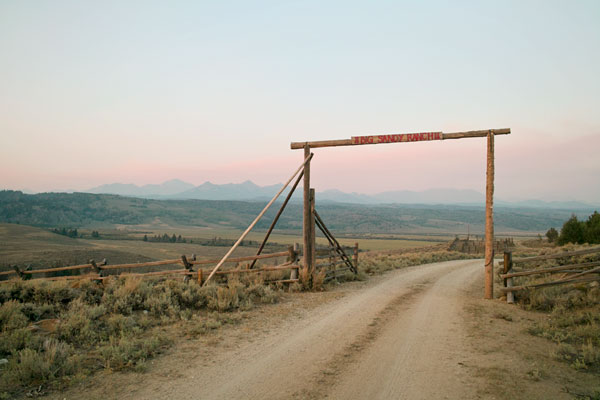
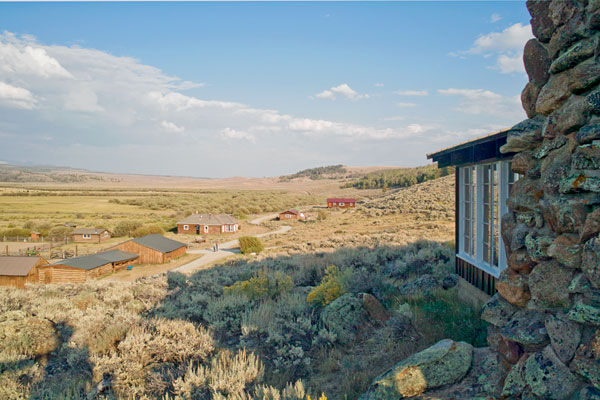
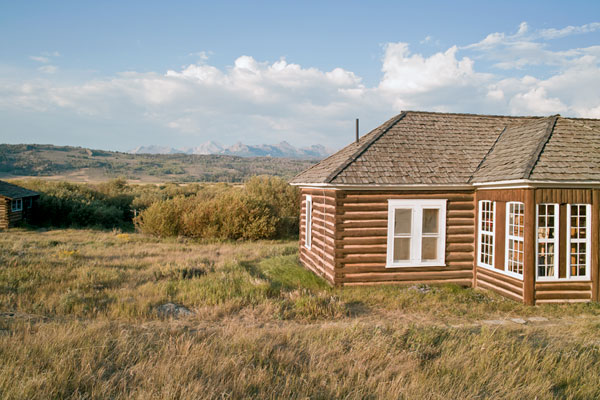
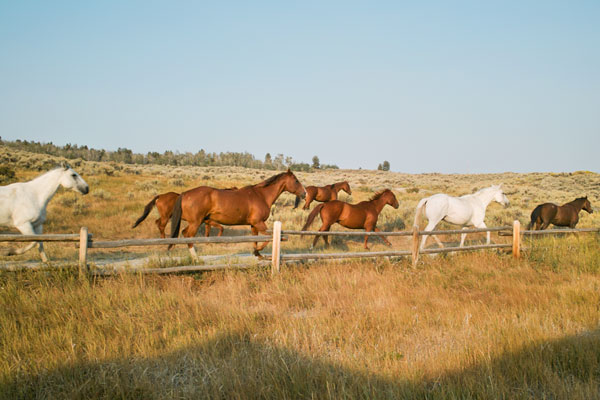
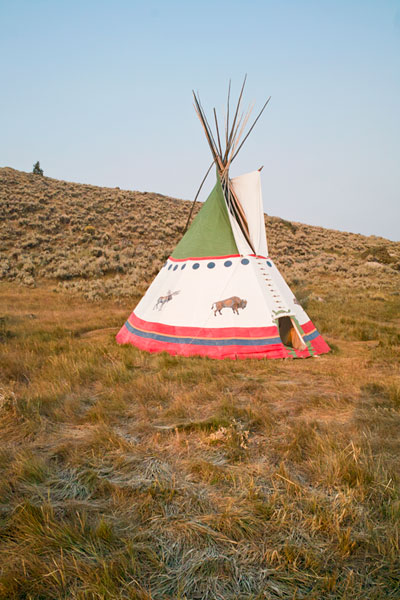
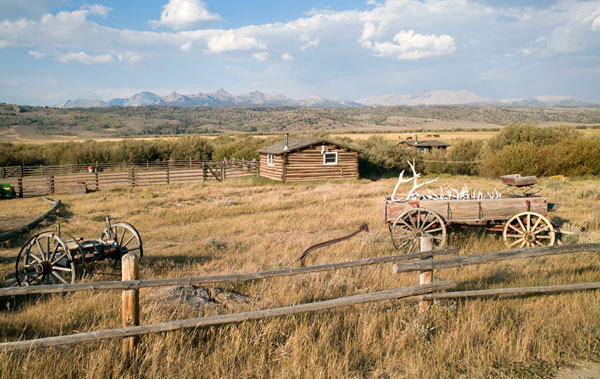
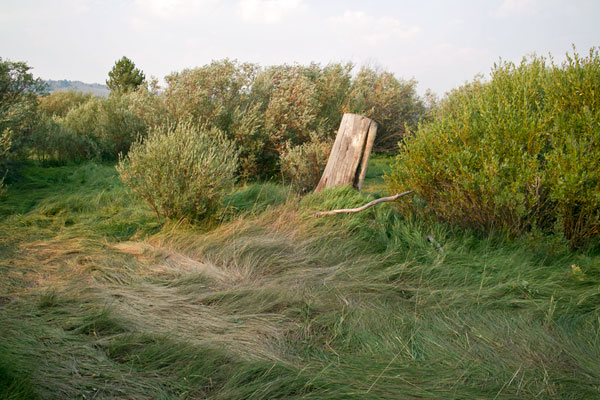
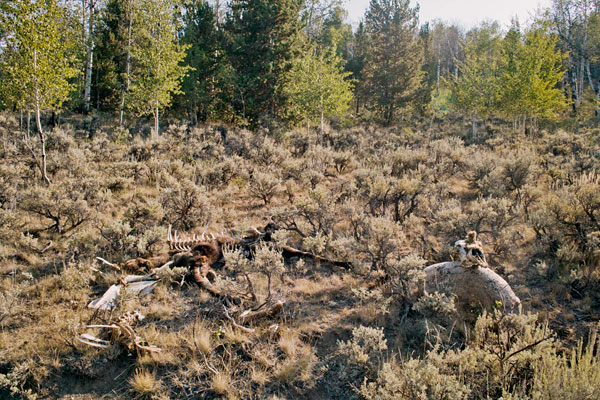
I’ve never been out West, but to my eyes the light in your photos is other-worldly, almost unrecognizable to my eyes. Maybe the color of the landscape gives it that quality.
Did you experience it the way I perceive it?
David, at least some of the unearthly light came from the presence of a smoky haze that lasted for most of the week I was there. The first picture, for instance, almost looks like it could have been taken by the Mars rover. The haze was the result of large brush fires burning far to the west. Also, that part of Wyoming is high desert, a relatively barren landscape, with most settlements found along creeks that come out of the Wind River Range to the east.
Brian,
Thanks for your response, and for the images. I made a similar observation about some photo’s taken recently in Peru. Subdued light, soft shadows, muted colors.
It makes for a nice comparison with the New York scenes – brash, colorful and assertive.
I am researching the genealogy of the Leckie family and especially Annie Stiers Leckie (the wife that was pregnant when Sam Leckie was murdered). Anyway, was very glad to find your beautiful pictures. Thanks!
My grandmother was married to Sam Leckie, her name was Annie Stires Luckey. secpmd husband was Andy Knudsen.
Mr Rose: On this “New York – Wyoming” site you have a post from Nels Stephens, dated 8/9/2014. This man is a distant cousin of mine who I would like to contact (not for any monetary or material gain, only to discuss family history). His grandmother, Annie Stiers Leckie, was my great-great aunt, and I’m in the process of trying to locate the ranch here in southwest WY where she was born. Would you please consider forwarding my contact info to Mr Stephens (and also to Tracy McWhirter (her post was in 2013 – I may be of some research assistance if she still needs it). I’d be most grateful.
Sincerely,
Evangelist Robert (Rob) Howard
Interim Pastor
New Bethel Bible Baptist Church
(Independent / Non-affiliated / Fundamental / Authorized King James Bible-only)
and,
Interim Director, New Bethel Bible Baptist Missions Board
1412 Lowell Ave Rear
Rock Springs WY 82901-6068
text/cell: (307) 212-2247
email: robhoward30@gmail.com